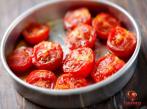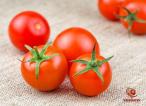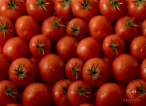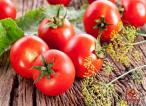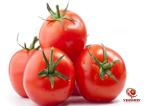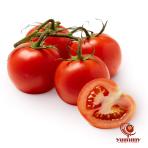Purchase and today price of pure tomato paste
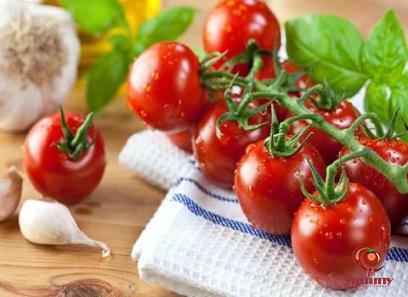
From classic Italian pasta dishes to hearty stews and tangy marinades, pure tomato paste stands as a cornerstone ingredient in countless recipes across the globe. This concentrated form of tomatoes offers a burst of rich, umami flavor and a vibrant red hue to dishes, elevating their taste profiles to new heights. In this comprehensive guide, we delve deep into the world of pure tomato paste, exploring its origins, production process, nutritional benefits, culinary uses, and practical tips for incorporating this versatile ingredient into your kitchen creations. **Origins and Production Process** Pure tomato paste traces its roots back to the sun-kissed tomato fields of countries like Italy, the United States, and China, where plump, ripe tomatoes are harvested at the peak of their flavor.

.
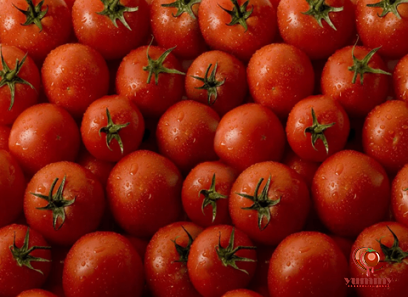 The process of transforming fresh tomatoes into concentrated paste begins with sorting, washing, and crushing the tomatoes to extract their juice and pulp. This slurry is then simmered at low heat to reduce its moisture content, leading to the formation of a thick, smooth paste. During this cooking process, the natural sugars in the tomatoes caramelize, intensifying the flavor and developing complex, savory notes. The paste is further strained to remove seeds and skins, resulting in a velvety texture that is both luscious and smooth. Some producers may add a touch of salt or preservatives for flavor enhancement and shelf-life extension, while others opt for a pure, natural approach, catering to consumers seeking clean-label products. **Nutritional Benefits** Pure tomato paste is not only a culinary powerhouse but also a nutrient-dense ingredient packed with essential vitamins, minerals, and antioxidants. Tomatoes are renowned for their high content of lycopene, a potent antioxidant that is linked to numerous health benefits, including reducing the risk of heart disease, certain types of cancer, and inflammation. The concentration of lycopene in tomato paste is significantly higher than that in fresh tomatoes, making it an excellent source of this valuable compound. Furthermore, tomato paste is rich in vitamin C, potassium, and folate, supporting immune function, heart health, and overall well-being. Its low calorie and fat content make it a guilt-free addition to dishes, allowing for flavor enhancement without compromising on health goals. When choosing pure tomato paste, opt for organic or non-GMO varieties to ensure a wholesome product free from pesticides and genetically modified ingredients.
The process of transforming fresh tomatoes into concentrated paste begins with sorting, washing, and crushing the tomatoes to extract their juice and pulp. This slurry is then simmered at low heat to reduce its moisture content, leading to the formation of a thick, smooth paste. During this cooking process, the natural sugars in the tomatoes caramelize, intensifying the flavor and developing complex, savory notes. The paste is further strained to remove seeds and skins, resulting in a velvety texture that is both luscious and smooth. Some producers may add a touch of salt or preservatives for flavor enhancement and shelf-life extension, while others opt for a pure, natural approach, catering to consumers seeking clean-label products. **Nutritional Benefits** Pure tomato paste is not only a culinary powerhouse but also a nutrient-dense ingredient packed with essential vitamins, minerals, and antioxidants. Tomatoes are renowned for their high content of lycopene, a potent antioxidant that is linked to numerous health benefits, including reducing the risk of heart disease, certain types of cancer, and inflammation. The concentration of lycopene in tomato paste is significantly higher than that in fresh tomatoes, making it an excellent source of this valuable compound. Furthermore, tomato paste is rich in vitamin C, potassium, and folate, supporting immune function, heart health, and overall well-being. Its low calorie and fat content make it a guilt-free addition to dishes, allowing for flavor enhancement without compromising on health goals. When choosing pure tomato paste, opt for organic or non-GMO varieties to ensure a wholesome product free from pesticides and genetically modified ingredients.
..
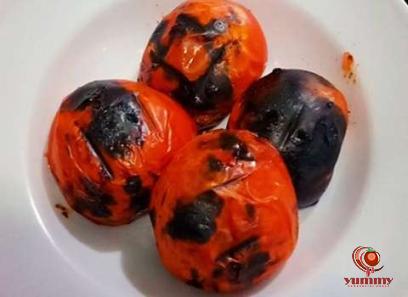 **Culinary Uses** The culinary versatility of pure tomato paste is truly remarkable, lending its bold flavor and rich color to a wide range of dishes. In Italian cuisine, tomato paste forms the base of classic sauces such as marinara, puttanesca, and arrabbiata, infusing pasta dishes with a robust tomato essence. It is also a key ingredient in pizza sauce, providing a concentrated burst of umami that complements the cheese and toppings perfectly. Beyond Italian fare, tomato paste plays a vital role in global cuisines, from Indian curries to Mexican salsas and American chili. Its ability to add depth and complexity to dishes makes it a favorite among chefs and home cooks alike. Additionally, tomato paste can be used as a marinade for meats, a flavor enhancer for soups and stews, and a secret ingredient in savory baked goods like bread and focaccia. **Practical Tips** When working with pure tomato paste, a little goes a long way due to its concentrated nature. Start by adding small amounts to your dishes, tasting as you go to achieve the desired level of tomato flavor. To prevent waste, leftover tomato paste can be frozen in an ice cube tray for future use, allowing for convenient portioning and storage. For a quick and easy tomato sauce, simply sauté garlic and onions in olive oil, add tomato paste, and thin it out with a bit of water or broth.
**Culinary Uses** The culinary versatility of pure tomato paste is truly remarkable, lending its bold flavor and rich color to a wide range of dishes. In Italian cuisine, tomato paste forms the base of classic sauces such as marinara, puttanesca, and arrabbiata, infusing pasta dishes with a robust tomato essence. It is also a key ingredient in pizza sauce, providing a concentrated burst of umami that complements the cheese and toppings perfectly. Beyond Italian fare, tomato paste plays a vital role in global cuisines, from Indian curries to Mexican salsas and American chili. Its ability to add depth and complexity to dishes makes it a favorite among chefs and home cooks alike. Additionally, tomato paste can be used as a marinade for meats, a flavor enhancer for soups and stews, and a secret ingredient in savory baked goods like bread and focaccia. **Practical Tips** When working with pure tomato paste, a little goes a long way due to its concentrated nature. Start by adding small amounts to your dishes, tasting as you go to achieve the desired level of tomato flavor. To prevent waste, leftover tomato paste can be frozen in an ice cube tray for future use, allowing for convenient portioning and storage. For a quick and easy tomato sauce, simply sauté garlic and onions in olive oil, add tomato paste, and thin it out with a bit of water or broth.
…
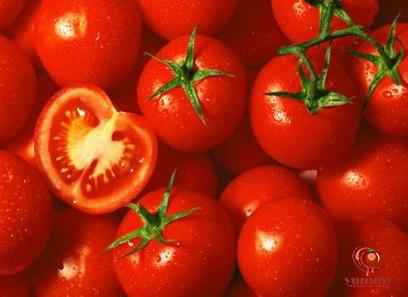 Season with salt, pepper, and herbs like oregano and basil for a homemade sauce that rivals any store-bought version. Experiment with different types of tomato paste, such as sun-dried or fire-roasted varieties, to discover new layers of flavor and complexity in your dishes. In conclusion, pure tomato paste stands as a kitchen essential that adds depth, richness, and tang to a myriad of recipes. Whether you’re simmering a pot of hearty bolognese or whipping up a vibrant salsa, this versatile ingredient is sure to elevate your culinary creations to sublime heights. Embrace the culinary marvels of pure tomato paste and unleash your creativity in the kitchen, one spoonful at a time. **Storage and Shelf Life** Proper storage of pure tomato paste is essential to maintain its freshness and flavor over time. Once opened, transfer any leftover tomato paste into an airtight container and store it in the refrigerator. Make sure to cover the surface of the paste with a thin layer of olive oil to create a seal and prevent oxidation. This simple trick helps preserve the vibrant red color and prevents the paste from drying out. Alternatively, if you won’t be using the entire can or tube of tomato paste at once, consider portioning it into smaller quantities and freezing them for later use. Freezing tomato paste in ice cube trays or small containers allows for easy portioning, ensuring you always have a supply on hand whenever a recipe calls for it. When stored properly, frozen tomato paste can maintain its quality for several months without losing its flavor or texture. When shopping for pure tomato paste, check the expiration date on the package to ensure freshness. Opt for products that are well-sealed and free from dents or leaks, as these could indicate potential quality issues. Additionally, consider purchasing tomato paste in a tube rather than a can, as tubes allow for easier dispensing and resealing, keeping the paste fresh for longer periods.
Season with salt, pepper, and herbs like oregano and basil for a homemade sauce that rivals any store-bought version. Experiment with different types of tomato paste, such as sun-dried or fire-roasted varieties, to discover new layers of flavor and complexity in your dishes. In conclusion, pure tomato paste stands as a kitchen essential that adds depth, richness, and tang to a myriad of recipes. Whether you’re simmering a pot of hearty bolognese or whipping up a vibrant salsa, this versatile ingredient is sure to elevate your culinary creations to sublime heights. Embrace the culinary marvels of pure tomato paste and unleash your creativity in the kitchen, one spoonful at a time. **Storage and Shelf Life** Proper storage of pure tomato paste is essential to maintain its freshness and flavor over time. Once opened, transfer any leftover tomato paste into an airtight container and store it in the refrigerator. Make sure to cover the surface of the paste with a thin layer of olive oil to create a seal and prevent oxidation. This simple trick helps preserve the vibrant red color and prevents the paste from drying out. Alternatively, if you won’t be using the entire can or tube of tomato paste at once, consider portioning it into smaller quantities and freezing them for later use. Freezing tomato paste in ice cube trays or small containers allows for easy portioning, ensuring you always have a supply on hand whenever a recipe calls for it. When stored properly, frozen tomato paste can maintain its quality for several months without losing its flavor or texture. When shopping for pure tomato paste, check the expiration date on the package to ensure freshness. Opt for products that are well-sealed and free from dents or leaks, as these could indicate potential quality issues. Additionally, consider purchasing tomato paste in a tube rather than a can, as tubes allow for easier dispensing and resealing, keeping the paste fresh for longer periods.


 Phone number:
Phone number:  WhatsApp Response:
WhatsApp Response:
